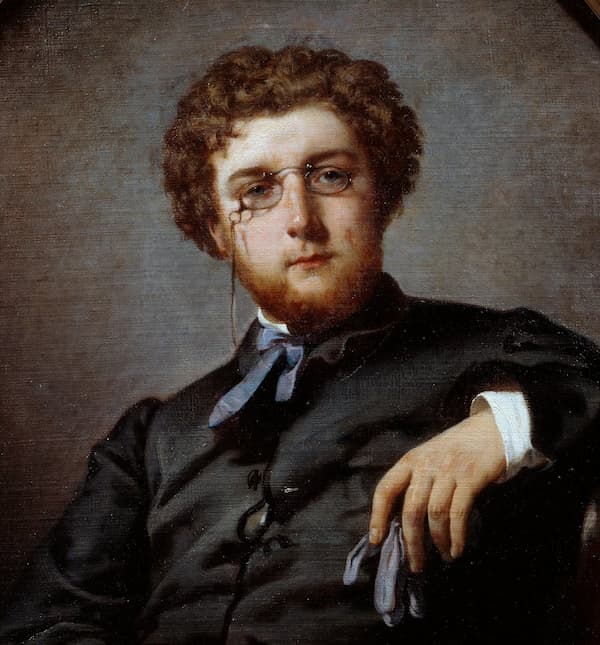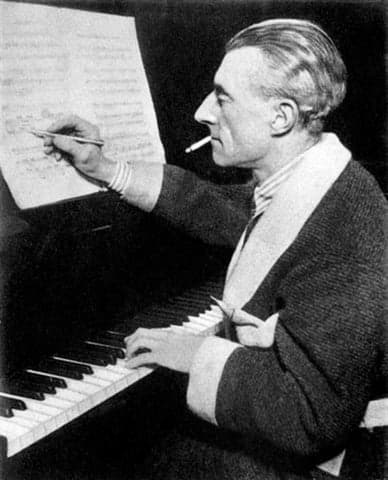Salieri at 200
Celebrating Five Operatic Gems
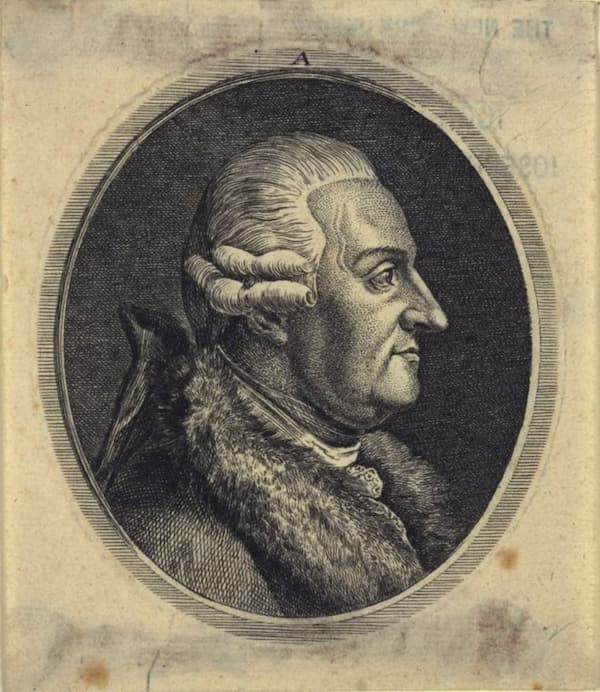
Portrait of Antonio Salieri
On 7 May 2025 we commemorate the 200th anniversary of the death of Antonio Salieri (1750-1825), an Italian composer whose contributions to the classical music landscape were profound yet often overshadowed by myths and misconceptions. Born near Verona, Salieri rose to prominence in Vienna where he served as court composer and Imperial Kapellmeister.
Salieri’s legacy has long been marred by a narrative that casts him as a jealous rival who poisoned Wolfgang Amadeus Mozart. Unsupported by historical evidence, the two composers shared a professional relationship marked by mutual respect. The poisoning myth unjustly tarnished Salieri’s reputation, reducing a multifaceted career to a caricature of envy.
Salieri made significant contributions to opera, crafting over 40 works that enriched the European stage with their melodic vitality and dramatic innovation. His ability to compose in Italian, French, and German allowed him to bridge diverse operatic traditions, and his mentorship of Beethoven and Schubert further shaped the genre’s development.
Salieri was a versatile and highly influential operatic force, and “SALIERI 2025” presents concerts, lectures and activities at various venues across Vienna throughout the year. As such, we decided to get things started by featuring five of his most notable operatic gems.
Europa Riconosciuta (1778)
Antonio Salieri: Europa Riconosciuta, “Va coll’aura scherzando”
Europa Riconosciuta, an opera in two acts composed by Antonio Salieri with an Italian libretto by Mattia Verazi, premiered on 3 August 1778 at the Teatro alla Scala in Milan. A significant milestone in operatic history, the opera was not performed again for 226 years until its revival in 2004 under Riccardo Muti.
In this inaugural opera for La Scala, Salieri and Verazi “ignored many of the conventions of Italian serious opera. The chorus is given an important role and action ensembles replace scenes that normally would have been set as recitatives.”
The Story
After a shipwreck, Queen Europa, King Asterio, and their son are captured by the evil Egisto, who desires Princess Semele. Semele loves the warrior Isseo and rejects Egisto. During a sacrificial rite, Isseo kills Egisto in battle. Europa graciously cedes Tyre’s throne to Semele and Isseo, leading to a joyful resolution.
Antonio Salieri: Europa Riconosciuta, “Quando più irato freme” (Diana Damrau, soprano; Le Cercle de l’Harmonie; Jérémie Rhorer, cond.)
Unconventionally, the opera uses two principal couples requiring two leading castratos and two prima donnas. In addition, as the opera is full of dramatic and violent events, it features a character killed on stage, in full view of the audience.
A scholar writes, “Salieri’s music matches the innovatory libretto in its vividness and pathos. Since Salieri was a student of Christoph Willibald Gluck, he incorporates elements of reform opera, blending dramatic intensity with fluid transitions between arias and recitatives. In his many ensembles, Salieri effectively differentiated the personalities of his characters and skillfully advanced the action. Composed when Salieri was 28, Europa Riconosciuta marked his emergence as a mature composer.
Antonio Salieri: Europa Riconosciuta, “Fra mille pensieri”
Tarare (1787)
Tarare, a tragédie lyrique in a prologue and five acts composed by Antonio Salieri with a French libretto by Pierre-Augustin Beaumarchais was the composer’s most daring work. Premiered on 8 June 1787 at the Paris Opéra, it blended social commentary, satire, and exoticism two years before the French Revolution.
In the fictional kingdom of Hormuz, the popular soldier Tarare and his wife Astasie face the jealous Sultan Atar, who desires Astasie and plots with the priest Arthénée to abduct her and kill Tarare. With help from the eunuch Calpigi and his wife Spinette, Tarare disguises himself, infiltrates Atar’s seraglio, and exposes the Sultan’s corruption.
A public uprising leads to Atar’s suicide and Tarare’s coronation. The prologue, with allegorical figures La Nature and Le Génie du Feu, mocks the powerful and promotes equality, while the opera’s moral emphasises character over social status.
Antonio Salieri: Tarare, Act I – Overture (Mannheim Mozart Orchestra; Thomas Fey, cond.)
Revolutionary Thoughts

Antonio Salieri’s Tarare
The story of a virtuous soldier navigating political intrigue, blending Enlightenment ideas with emotional depth, is completely in tune with the times. While Europa adheres to mythological and aristocratic themes, Tarare embraces a populist, anti-authoritarian narrative and through-composed structure.
With its innovative use of recitative, vivid orchestration, and the integration of philosophical themes, Tarare was a critical success. It is a revolutionary opera, both musically and thematically, that blends satire, tragedy and social critique with Salieri’s innovative score.
Tarare presents major musical advancements, particularly with its through-composed structure, exotic orchestration, active chorus, and flexible vocal writing. It is a transitional work between Classical reform opera and Romantic grand opera, and its influence is evident in the continuous dramatic flow of Meyerbeer and the revolutionary choruses of Verdi.
Antonio Salieri: Tarare, “Povero Calpigi”
Axur, re d’Ormus (1788)
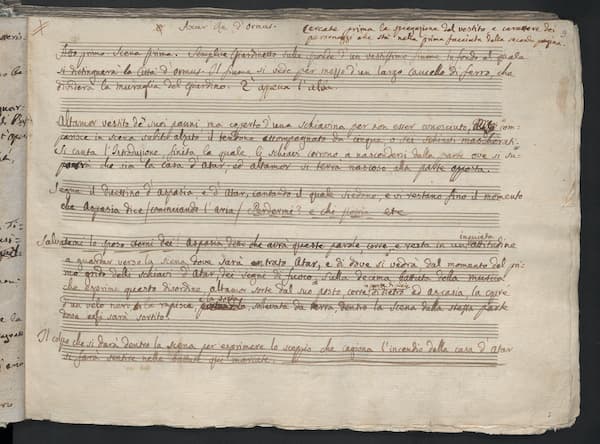
Antonio Salieri’s Axur, re d’Ormus
Antonio Salieri’s greatest triumph, overshadowing Mozart’s Don Giovanni in popularity during its time, was the “dramma tragicomico” Axur, re d’Ormus. First conceived as a translation into Italian of Tarare, Salieri and Lorenzo Da Ponte eventually abandoned the translation in favour of a new opera based freely on Beaumarchais’ libretto.
While Da Ponte’s text follows Tarare in general, the two operas differ in many details and in some aspects of characterisation. Commissioned by Emperor Joseph II, Da Ponte and Salieri gave buffo elements a prominent place. The character of King Axur became something of a caricature, a buffo tyrant, with the role of the eunuch Biscroma becoming an even greater source of humour.
Da Ponte removed Tarare’s philosophical prologue and explicit critiques of monarchy, focusing instead on personal drama and moral triumph. In his music, Salieri provided a masterful fusion of Italian operatic lyricism with the dramatic intensity of French tragédie lyrique. In essence, he created a vibrant emotionally versatile score that captivates through its adaptability and theatrical flair.
Antonio Salieri: Axur, Re d’Ormus (Andrea Martin, baritone; Curtis Rayam, tenor; Eva Mei, soprano; Ettore Nova, bass; Ambra Vespasiani, mezzo-soprano; Massimo Valentini, bass; Michele Porcelli, baritone; Mario Cecchetti, tenor; Sonia Turchetta, contralto; Giovanni Battista Palmieri, bass; Guido d’Arezzo Chorus; Russian Philharmonic Orchestra; René Clemencic, cond.)
Masterful Fusion
The dynamic integration of comedy and tragedy is achieved through innovative ensemble writing and a lively chorus that propels the drama forward. The chorus is transformed from a passive commentator into a forceful protagonist, and Salieri’s tonal variety keeps the score unpredictable and engaging. This blend of emotional depth, comedic sparkle, and grand spectacle is underpinned by a keen sense of theatrical pacing.
Axur was a sensational success, praised for its musical richness, dramatic pacing, and stellar cast. It was performed across Europe, from London to St. Petersburg, and remained in Vienna’s repertoire into the 19th century. Critics lauded Salieri’s ability to blend Italian lyricism with French grandeur, though some noted its melodies were less memorable than Mozart’s. To be sure, Axur influenced early Romantic opera, particularly in its use of ensembles and exotic settings, and it showcased Salieri’s great versatility.
Antonio Salieri: Axur, Re d’Ormus (Andrea Martin, baritone; Curtis Rayam, tenor; Eva Mei, soprano; Ettore Nova, bass; Ambra Vespasiani, mezzo-soprano; Massimo Valentini, bass; Michele Porcelli, baritone; Mario Cecchetti, tenor; Sonia Turchetta, contralto; Giovanni Battista Palmieri, bass; Guido d’Arezzo Chorus; Russian Philharmonic Orchestra; René Clemencic, cond.)
Les Danaïdes (1784)
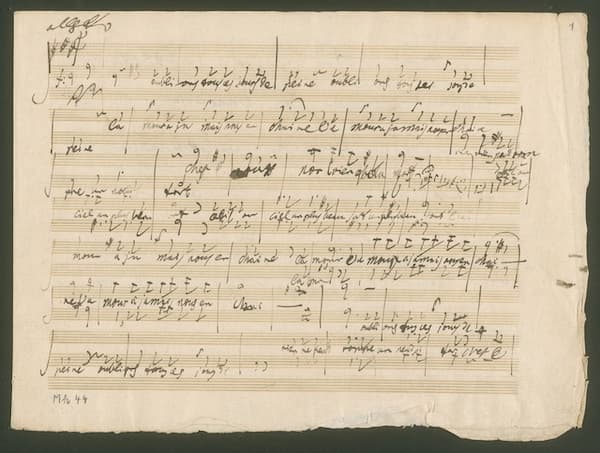
Antonio Salieri’s Les Danaïdes
Premiered on 26 April 1784 at the Paris Opéra, Les Danaïdes was Salieri’s first French opera and a resounding success. It was initially commissioned for Christoph Willibald Gluck, but when a stroke incapacitated the composer, he passed it to his protégé Salieri. It is hardly surprising that the work would reflect the principles of the Gluckian reform by prioritising dramatic truth and musical-textual unity over vocal virtuosity.
The libretto is rooted in Greek mythology and delivers a gory and morally complex narrative that thrilled and shocked audiences. A young Hector Berlioz wrote in his memoirs, “The pomp and brilliance of the spectacle, the sheer weight and richness of sound produced by the combined chorus and orchestra… excited and disturbed me to an extent which I will not attempt to describe.”
Antonio Salieri: Les Danaïdes, “Overture”
The Plot
The opera follows the 50 daughters of Danaüs, who flee to Argos to avoid marrying the 50 sons of Aegyptus. Danaüs, fearing a prophecy of death by his son-in-law, agrees to the marriages but secretly instructs his daughters to kill their husbands on their wedding night.
All obey except Hypermnestre, who spares her husband, Lyncée, out of love. During a deceptive wedding feast, the Danaïdes murder their husbands. Hypermnestre’s attempt to warn Lyncée is misunderstood as betrayal. In the end, Lyncée survives, Danaüs is overthrown, and the Danaïdes face eternal punishment in a hellish finale.
Antonio Salieri: Les Danaïdes, “Foudre céleste je t’appelle” (Montserrat Caballé, soprano; RAI Symphony Orchestra, Rome; Gianluigi Gelmetti, cond.)
The Music
Les Danaïdes turned out to be a pivotal work for Antonio Salieri as he combined reform opera principles with lyrical warmth. Essentially, the work transitioned from a segmented number opera into a continuous, dramatically driven scenic opera. The score is marked by bold orchestration, powerful choruses, and emotional intensity.
Salieri’s Italian-influenced lyricism balances the opera’s grimness and enhances its emotional accessibility. Dramatic contrasts, particularly festive versus ominous tones, heighten the plot’s subversiveness, while seamless scene transitions foreshadow 19th-century grand opera. The opera departs greatly from pastoral norms by presenting a violent Greek tragedy with 99 deaths. Salieri’s setting approaches a through-composed structure, with scenes flowing seamlessly while Hypermnestre’s proto-Romantic role functions as the emotional core.
Les Danaïdes was an immediate and lasting success. It was performed 127 times at the Opéra into the 1820s, thrilling audiences with its gore and grandeur. The opera’s enduring power, evident in modern recordings, lies in its ability to thrill and disturb, as Berlioz famously noted. It is one of the cornerstones of Salieri’s legacy.
Antonio Salieri: Les Danaïdes,“Par les larmes dont votre fille”
Falstaff, ossia Le tre burle (1799)
One of the first operas to derive its plot from The Merry Wives of Windsor, Salieri’s Falstaff came at the end of his prolific operatic career. Composed at the age of 48, Salieri subsequently transitioned to sacred music and teaching. The librettist, Defranceschi, streamlined Shakespeare’s sprawling play to fit opera buffa conventions and focused on Falstaff’s misadventure while eliminating a number of subplots.
Premiered on 3 January 1799 at the Kärntnertortheater in Vienna, this adaptation suited the Viennese taste for concise, comedic operas with vivid characters and musical wit. Salieri was aware that the opera scene in the 1790s was dominated by Mozart’s Le nozze di Figaro, and he thus crafted an opera that echoed Figaro’s ensemble-driven comedy while maintaining his own distinct voice.
Antonio Salieri: Falstaff, “Oh, quanto vogliam ridere”
The Plot
Set in 15th-century Windsor, the opera follows the penniless and pompous knight Sir John Falstaff, who attempts to woo two wealthy matrons, Mistress Ford and Mistress Slender, to restore his fortunes. After sending them identical love letters, the women discover his scheme and, with their husbands’ knowledge, plot revenge.
They trick Falstaff three times: first, hiding him in a laundry basket dumped into the Thames; second, disguising him as an old aunt beaten by the jealous Mr. Ford; and third, luring him to Windsor Forest as Herne the Hunter, where he is tormented by a mock fairy court. The opera ends with Falstaff’s humiliation, Ford’s reconciliation with his wife, and a comedic finale celebrating wit and fidelity over greed.
Antonio Salieri: Falstaff – Act II Scene 16: Fate verdi, turchine – Last Scene: Per or non si parte (Hjordis Thébault, mezzo-soprano; Nigel Smith, baritone; Pierre-Yves Pruvot, baritone; Les Chantres de la Chapelle; Grande Écurie et la Chambre du Roy; Jean-Claude Malgoire, cond.)
The Music
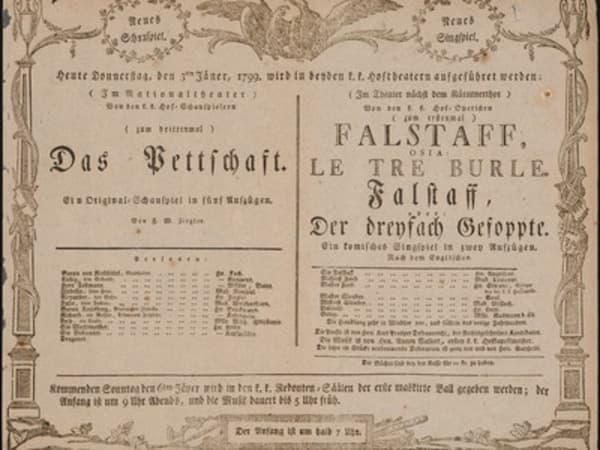
Antonio Salieri’s Falstaff
Falstaff contains all the usual ingredients of a late 18th-century opera buffa. Ensembles predominate over arias, and much of the dialogue is set as simple recitative. “And there is extensive parody of seria style and rather long and complicated finales.” Salieri carefully differentiated their characters, and the canonic duet “La stessa, la stessissima” was used by Beethoven shortly after the premiere as the basis for a set of variations.
The opera is characterised by its sophisticated musical craftsmanship, blending opera buffa wit with Mozartian ensemble brilliance and innovative orchestral integration. The score shines through its intricate ensembles, and Salieri’s tone painting adds comedic flair. The harmonically rich secco recitatives, punctuated by dramatic orchestral stabs, keep the farce moving, while the lively Sinfonia and spicy wind writing infuse the opera with dance-like energy.
Antonio Saleri: Falstaff, “La stessa, la stessissima”
Conclusion
Antonio Salieri’s music holds a significant place in the history of opera, serving as a vital bridge between the Classical reforms of Christoph Willibald Gluck and the Romantic innovations of composers like Rossini, Meyerbeer, and Verdi. His operas demonstrate a remarkable versatility, blending Italian lyricism, French grandeur, and Viennese wit to create works that were both commercially successful and musically forward-thinking.
Salieri’s emphasis on dramatic continuity pushed opera towards a more cohesive theatrical art form, influencing the development of grand opera and opera buffa. As a scholar wrote, “his knack for tailoring music to diverse cultural contexts, French tragedy, Italian comedy, and Viennese spectacle, underscores his adaptability, ensuring that his works resonated with audiences across Europe during his lifetime.
Salieri at 200 is seeing an ongoing revival of his operas, affirming his enduring relevance. In essence, his music not only shaped the evolution of opera but continues to charm and surprise audiences today.
For more of the best in classical music, sign up for our E-Newsletter

